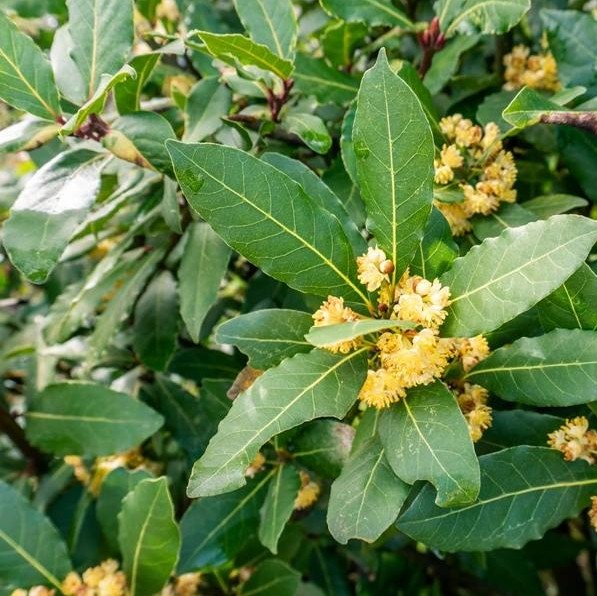Laurel / Bay Tree (Laurus nobilis)
Map Position: 18Laurus nobilis is an evergreen shrub or small tree that grows well in the Holy Land. Plants with similar foliage and appearance are often called laurel or bay as well.
Bay is used as an herb and spice, especially in the Mediterranean cuisine. Dried berries and leaves are a source for oil, wood is burned for smoke flavour. It is used in herbal medicine, massage, and aromatherapy.

Laurel leaves are important in many cultures as a sign of high status and glory. Most famously, the laurel wreath worn by winners of sports competitions, and Roman emperors.
There are four laurels on the south side of the car park.
Biblical
The Catholic Bible does not mention the “Bay Tree”, but the “Laurel Tree”. Here again, we have the problem of associating terms from the time of the writing of the Bible with later or modern terminology.
Psalm 37.35 in the Catholic Bible (ESV) reads: “I have seen a wicked, ruthless man spreading himself like a green laurel”. The plant referred to is an evergreen vigorously growing tree. In the King James Version, it is translated as “Bay Tree”, Luther calls it “Lorbeer”, German for Bay Tree or Laurel.
In the New Testament St Paul writes “Every athlete exercises self-control in all things. They do it to receive a perishable wreath, but we are unperishable” (Corinthians 9.25). This can be seen as an indirect reference to the laurel: The winner of a sports competition received a laurel wreath, which of course will wither over time; Christians should exercise self-control in all things to receive an unperishable wreath. The laurel wreath could of course also be an olive branch.
